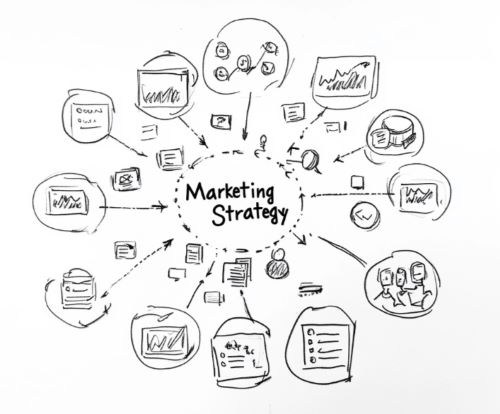7 Inbound Marketing Tips For New Businesses
Starting a new business requires an inbound marketing foundation. Established companies have resources and existing customer bases, new businesses can level the playing field with inbound marketing.
Here are 7 inbound marketing strategies to attract and convert new customers for your new business.
1. Start with Buyer Persona
Understanding your target audience is the foundation of successful inbound marketing.
Creating detailed buyer personas helps you identify precisely who you’re trying to reach and what motivates their purchasing decisions.
This deep understanding will inform everything from your content strategy to your choice of marketing channels.
- Interviews with potential customers
- Competitor customer analysis
- Demographic and psychographic data
- Pain points and challenges
- Decision-making process
These personas will guide all your future marketing efforts, from content to channel.
2. Create Content That Addresses the Buyer’s Journey
Content creation is at the heart of inbound marketing, but it needs to be strategic and purposeful. Your potential customers go through distinct stages before making a purchase decision, and your content needs to support them at each step.
Understanding and mapping content to these stages ensures you’re providing value throughout the entire customer journey.
Your content should map to three stages: awareness, consideration, decision. For new businesses, focus on:
- Awareness: Blog posts, how-to guides, industry trends
- Consideration: Case studies, comparison guides, expert interviews
- Decision: Product demos, free trials, consultation offers
TIP: Quality over quantity – start with one or two high-value pieces per stage rather than trying to do everything at once.
3. Optimize Your Website for Conversion
A well-optimized website works 24/7 to convert visitors into leads and leads into customers. Every element of your site should be strategically designed to guide visitors toward taking meaningful action.
Your website is your digital storefront and main conversion tool. Make sure it’s:
- Fast (under 3 seconds)
- Has calls-to-action on every page
- Has contact forms easy to find and fill out
- Offers content downloads in exchange for contact info
- Mobile-responsive design for all devices
TIP: Don’t forget to set up analytics from day one so you can measure your success and see what needs to be improved.
4. Follow SEO Best Practices from the Get-Go
Search engine optimization is a long-term investment that begins “paying dividends” as your site authority grows.
While immediate results might be challenging, implementing proper SEO practices from the start sets a strong foundation for future organic growth.
Having a solid SEO strategy helps ensure your content reaches your target audience when they’re actively searching for solutions.
SEO results for new businesses are tough, but laying the foundation is key:
- Research and target long-tail keywords with less competition
- Optimize all content for search engines without sacrificing readability
- Create location-based content if you serve local markets
- Build a logical site structure with clear navigation
- Technical SEO is in place
TIP: Focus on content clusters around your core products to establish topical authority.
5. Build Lead Nurturing Workflows
Not every visitor is ready to buy immediately, making lead nurturing crucial for converting prospects into customers.
A well-designed lead nurturing strategy keeps your business top-of-mind and provides value throughout the buyer’s journey.
Automated workflows help you scale your nurturing efforts efficiently while maintaining a personal touch.
Don’t let leads go cold. Create automated email workflows that:
- Welcome new subscribers with valuable content
- Segment contacts based on interests and behaviors
- Provide progressive content to move prospects through the funnel
- Trigger follow-up emails based on actions
- Re-engage inactive contacts with targeted content
TIP: Start with one or two simple workflows and add more as you get data on what works.
6. Use Social Media Strategically
Social media success comes from quality engagement rather than the quantity of posts. The key is to be present and active on platforms where your target audience spends their time.
Creating meaningful connections through social media helps build brand awareness and trust with potential customers.
Rather than trying to be on every platform, choose 2-3 where your target audience is most active:
- Share your original content
- Engage with followers and industry influencers
- Monitor conversations and contribute meaningfully
- Use platform-specific features like LinkedIn articles or Instagram Stories
- Track engagement metrics to adjust
Social media is about relationships, not just broadcasting.
7. Measure, Analyze, Adjust
Data-driven decision-making is crucial for inbound marketing success. Regular monitoring and analysis of your marketing metrics help you understand what’s working and what needs improvement.
This iterative approach ensures that your marketing efforts become more effective over time.
- Track everything
- Monitor KPIs monthly
- See which content types get the most engagement
- Track conversion rates at each stage of the funnel
- Make data-driven decisions on where to invest
Don’t be afraid to pivot if something isn’t working.
Conclusion
Inbound marketing doesn’t happen overnight, but new businesses that consistently do this will set themselves up for long-term growth.
Focus on creating value for your target market, and the results will follow. Start with the basics, measure, and optimize based on data and customer feedback.


